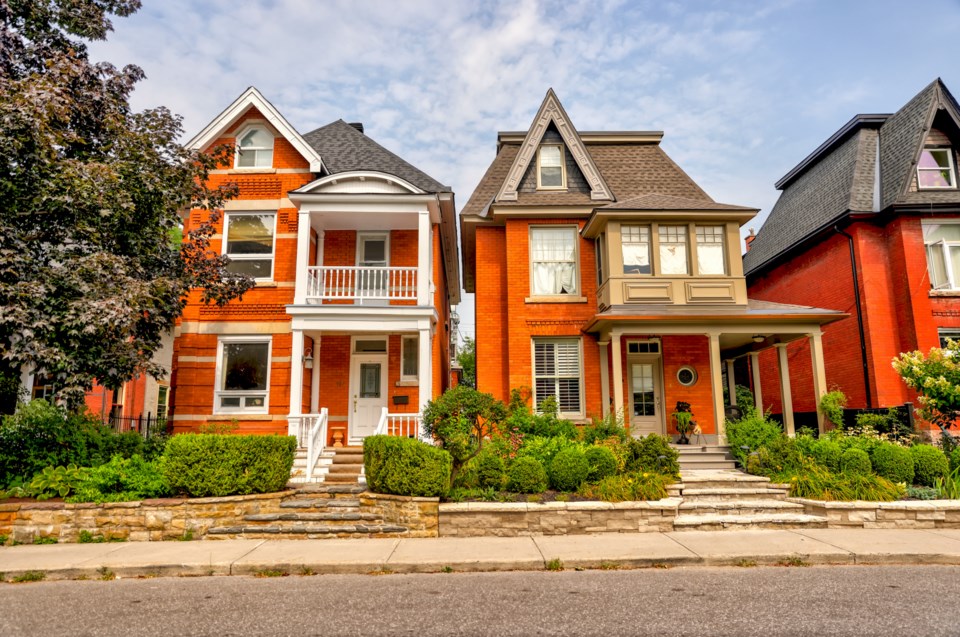My experience and observations in the world of real estate statistics, over the past 18 years, have led me to this conclusion about current market conditions… it’s all going to be fine. It’s not currently fine, but it will be. I’m not giving a lame, middle-of-the-road, make-people-feel-good kind of statement here. I feel like I’m going out on a limb with this assessment.
With interest rates still rising and fluctuating wildly, it’s tough to have optimism. With nothing to buy, prices rising, and affordability declining, a pessimistic view of the market is understandable. But let’s take this one step further. For the most part, people who own their homes are in great shape: 42 per cent of them own their homes outright; 90% have an interest rate below six per cent; and about 97 per cent of homeowners have a home equity position of more than 100 per cent. Those numbers represent stability, or insulation against rising prices, volatile interest rates, and declining affordability.
If homeowners, in general, have stability in their corner, what about potential buyers? They have options. Clearly, one option is to keep renting, but that’s not going to build family wealth or vault them into any of the homeowner scenarios mentioned above. All other options must include some amount of optimism in buying a house. Option 1: buy an existing home at today’s high rates, then refi when rates come down. Option 2: buy a brand-new home and take advantage of the builders’ rate buy-down incentives, and then refinance when rates come down. Not an option: wait until prices come down – see the end of paragraph 2 above – they probably won’t, too much stability in the market.
The numbers above reflect homeowner stability. These are published in a lot of places and all of them are slightly different but mostly tell the same story. There are other numbers and predictions you hear about that linger in the ether but never come true. The most recent one was that all Airbnb owners were going to list and sell their properties. This was going to flood the market with listings and prices were going to tank. Then there was the “Silver Tsunami”, when all baby boomers were going to list and sell their homes and move into assisted living all at once. The tidal wave of forbearance-foreclosures that were supposed to flood… you get the point. Dire predictions that promote fear are more click-worthy than optimism.
If you like a little optimism in your life, you might like this next part. It’s time to look at the charts. Click on the Longmont Area link and follow along. Over the past two years, the monthly housing prices reported here go up one month and go down another. This is just a measure against where they were the year before. Well, with interest rates rising from three per cent to almost eight per cent you can clearly see the trend in prices. They weave up and down in a steady pattern during the cycle of a year. They are also making a steady climb upward.
The chart has some color-coded lines linking the low points for each area. What you can’t see are the numbers behind this graph. From the first point on the left to the last point on the right, the price gains are as follows: Longmont +13.8 per cent, Ft. Collins +11.2 per cent, Firestone, Frederick, and Dacono area +2.7 per cent. If you click on the link to the Northern Colorado report you’ll see similar results with Loveland +16.3 per cent, and Greeley +10.4 per cent. Pretty impressive since prices were skyrocketing in September of 2021.
It appears there is a limit to price increases in the Northern Colorado Empire. That limit seems to be revealed in the link that contains the Boulder Area Graph. I noticed something different and drew those lines to connect the first and last data points. They were as flat as could be. Once the math was complete, we saw a slight decline in all three towns. Now, there was a giant fire that eliminated 1,000 homes in the area, and those prices are otherworldly for most people, but those price differentials are Boulder -0.5 per cent, Lafayette -2.6 per cent, and Louisville -0.4 per cent. The minus signs make people nervous, but I’d call that a flat market. This is what I have been predicting for the past two years and it looks as if it affects the higher price points first.
There are fluctuations in average and median prices, days on market, active listings, and closed monthly sales sprinkled throughout these reports every month. Seeing the long-term picture in the graphs I created is, for the most part, a better measuring stick. Getting overly concerned about a 268.8 per cent increase in days on market for Longmont attached homes is pointless. We’ve covered this several times that it’s due to new construction that gets listed the day the foundation is built, and it skews the numbers.
Get used to this volatility. It will look like this until interest rates fall or the sky falls, whichever one happens first. I’m betting on rates stabilizing and starting to fall by spring.



